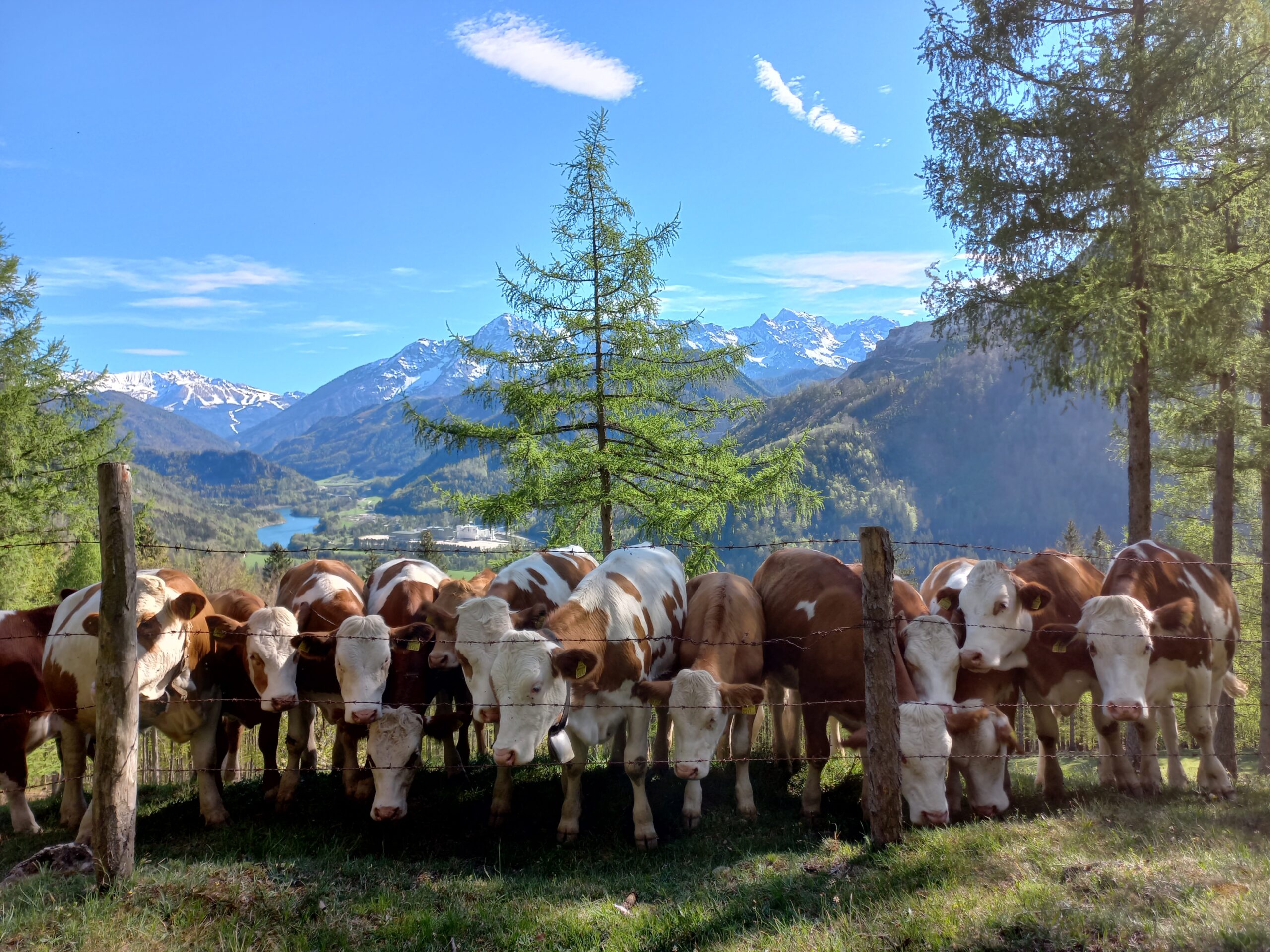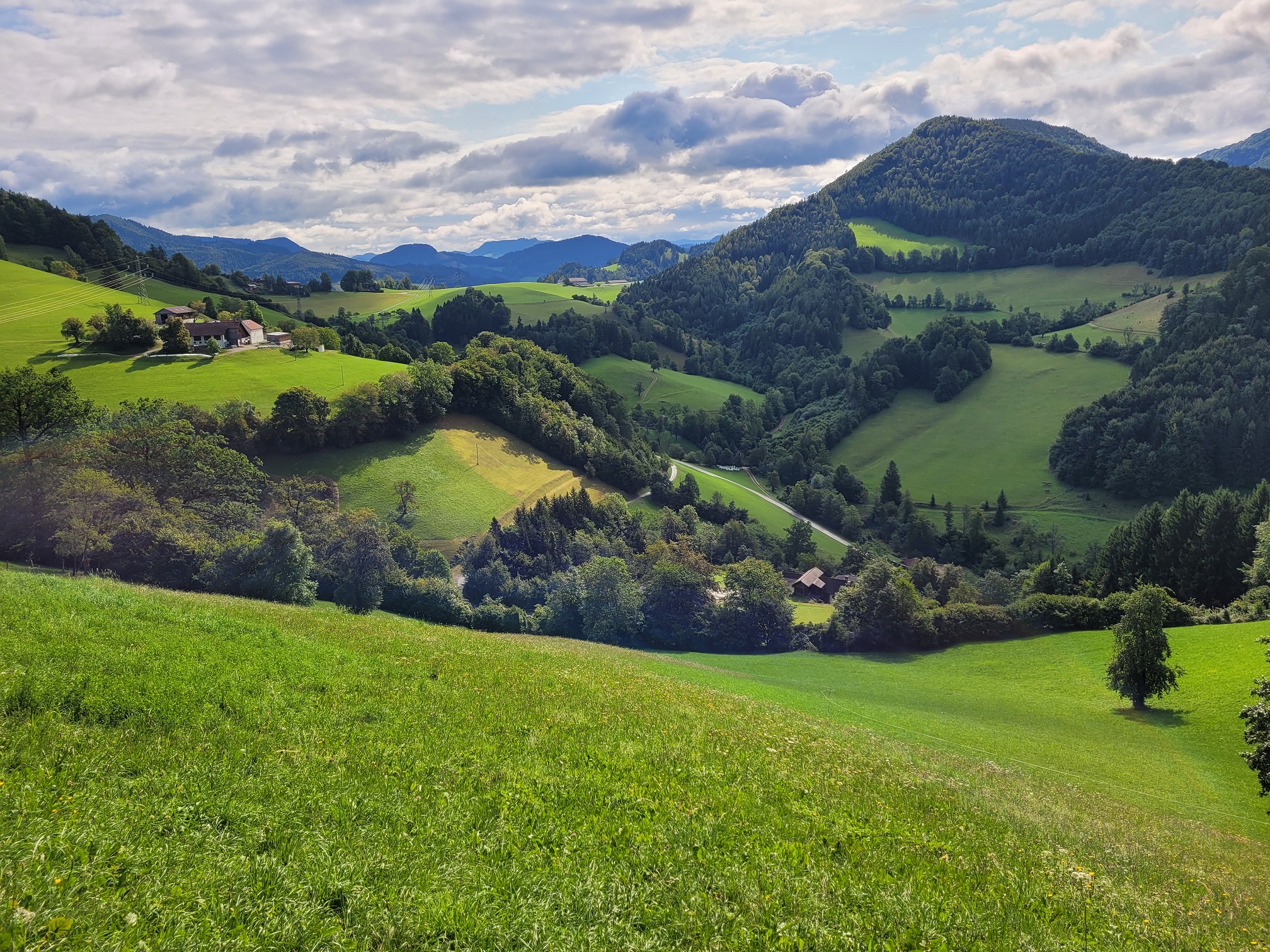Market valuation and compensation of ecosystem services provided by Upper Austrian livestock farmers
Mountain farming provides numerous ecosystem services which, apart from the provision of food, are rarely or insufficiently compensated. Amid the challenges facing mountain farming, an Austrian Operational Group has explored ways to remunerate these ecosystem services, offering a potential means to increase farmers’ incomes while promoting sustainable agricultural practices.
Beyond provision services, unpaid ecosystem services
The Kalkapen National Park region is characterised by extensive mountain farming, which relies on grassland and cattle farming. However, in recent decades, mountain farming has faced challenges due to the high costs of grassland cultivation as well as broader trends in the agricultural sector, such as declining grassland use, declining on-farm labour forces fluctuating market prices for milk and beef and growing reliance on public support, especially from the Common Agricultural Policy. These changes highlight the need to increase and diversify farm income, including by compensating the ecosystem services provided by livestock farmers.
Ecosystem services are generally defined as aspects of ecosystems that benefit human societies, whether actively or passively. These can be provisioning services, such as food production, or regulatory services like water purification and fire prevention, as well as cultural services like the preservation of landscapes that support both ecosystems and tourism. Pastoralism is recognised as a major provider of ecosystem services. While provisioning services are compensated through the purchase of food, other services are often neither quantified nor remunerated.
Quantifying the ecosystem services provided by farmers in the Kalkapen park
The “Mehrwert Berglandwirtschaft” (Value-added Mountain Farming) Operational Group was established in 2022 to define, quantify, and value the ecosystem services provided by mountain farmers in the Kalkapen National Park region. In this region, 50% of farms have between 0.5 and 1.5 livestock units per hectare and are ranked between 80 and 190 difficulty points in Austria’s compensation scheme for mountain farming.
Farmers and researchers collaborated to identify ecosystem services of particular value in the high calcareous Alps of Austria. A total of 5 regional and 34 on-farm indicators were selected for study, including rare cattle breeds and the percentage of permanent grassland. The Operational Group then worked to quantify these services, involving 29 pilot farms to compare the ecosystem service provision of mountain farms to regional benchmarks and non-mountain farms. This allowed for the measurement of added value at the farm level.
Concrete solutions for valuing and compensating these ecosystem services on the market
With a view to better remunerating mountain farmers, the project has helped to quantify the ecosystem services provided by mountain livestock farmers in Upper Austria and the associated provision costs but also to identify interesting solutions for remunerating these services. Potential market-based solutions include :
- Involving consumers: through direct sales, community-supported agriculture (like the AMAPs in France) or crowd farming. These models are considered to be effective as they enable consumers to connect directly with producers, to be empowered in their food choices and to be sensitised to the benefits of different farming practices. These models reduce intermediaries and give farmers more control over production volumes, with direct benefits on income. However, they also create greater visibility and expectations from consumers, which can be demanding.
- Valuing ecosystem services through packaging: quality labels (regional labels, origin certifications, park or brand specific brands) and voluntary information about farming practices can help increase the perceived value of products and justify prices. While this approach offers benefits, it also introduces additional administrative burdens, such as certification and compliance costs. Caution is also needed when it comes to voluntary information to avoid “greenwashing” and misleading consumers, especially in light of forthcoming regulations like the EU Green Claims Directive.
- Introducing result-based payments: by linking ecosystem service provision to specific indicators (such as the number of traditional livestock breeds or insect populations), farmers could be directly compensated for the tangible outcomes of their farming practices. This method is particularly suited for regulatory services and biodiversity benefits. However, this requires accurate measurement and certification of the service provided, as well as risk assessments for farmers.
More widely, the Operational Group’s efforts have helped to illustrate that production costs increase considerably as the slope increases and that the CAP payments for Areas with Natural Constraints (ANC) only partially compensate for this loss of productivity (in Europe, it is estimated that productivity in ANC areas is around 40% lower than on the plains and that mountain farmers’ income is 20% lower). It has therefore helped to highlight the economic difficulties specific to mountain areas and to find potential solutions for increasing farmers’ income.


